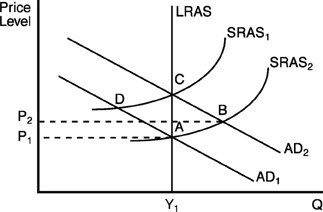Which statement is true?
A. Our lower rate of productivity growth has been affected by our low rate of savings.
B. Our lower rate of productivity growth has been caused almost entirely by our high rate of savings.
C. Our high rate of productivity growth has been caused almost entirely by our high rate of savings.
D. Our high rate of productivity growth has been caused almost entirely by our low rate of savings.
A. Our lower rate of productivity growth has been affected by our low rate of savings.
You might also like to view...
A 2% wage increase for teachers or police officers is:
a. usually offset by higher output per worker. b. leads to increases in municipal budgets. c. indicates that teachers and police have became more selfish. d. leads to more personalized service.
Part of the reason for the success of Facebook is:
A. the avoidance of a positive externality. b. a strong negative network externality. C. a strong positive network externality. D. the avoidance of a negative externality.
 In the above figure, if initial equilibrium is at point A and if there is an unanticipated increase in aggregate demand from AD1 to AD2, then
In the above figure, if initial equilibrium is at point A and if there is an unanticipated increase in aggregate demand from AD1 to AD2, then
A. in the short run real output will remain at Y1. B. in the long run real output will increase above Y1. C. in the short run real output will increase above Y1, but in the long run it will return to Y1. D. real output will increase above Y1 in both the short run and in the long run.
When Tesla, a U.S. company, purchases Italian-made Pirelli tires for its automobiles, the purchase is
A) both a U.S. and an Italian import. B) a U.S. import and an Italian export. C) a U.S. export and an Italian import. D) neither an export nor an import for either country.